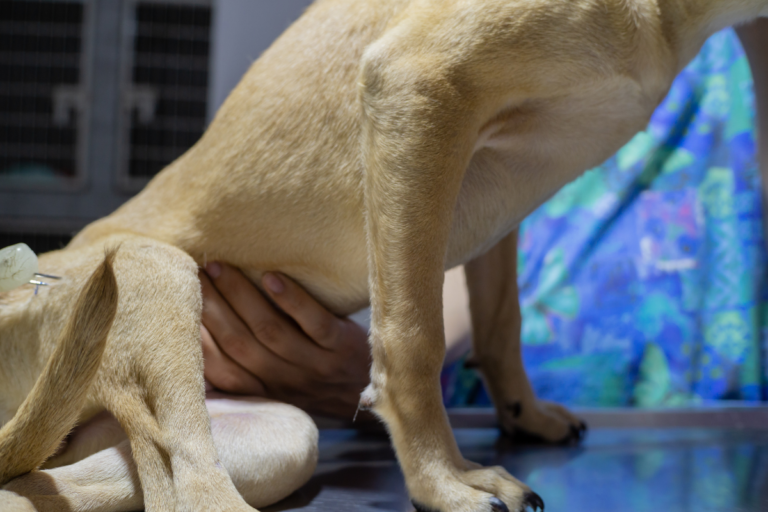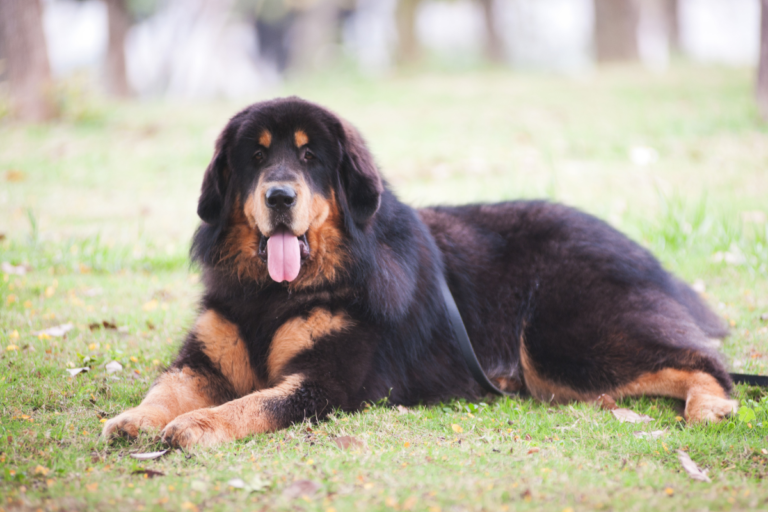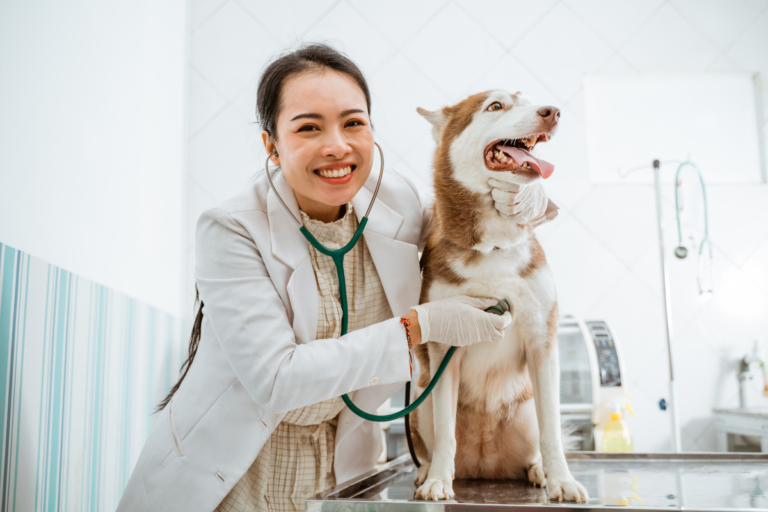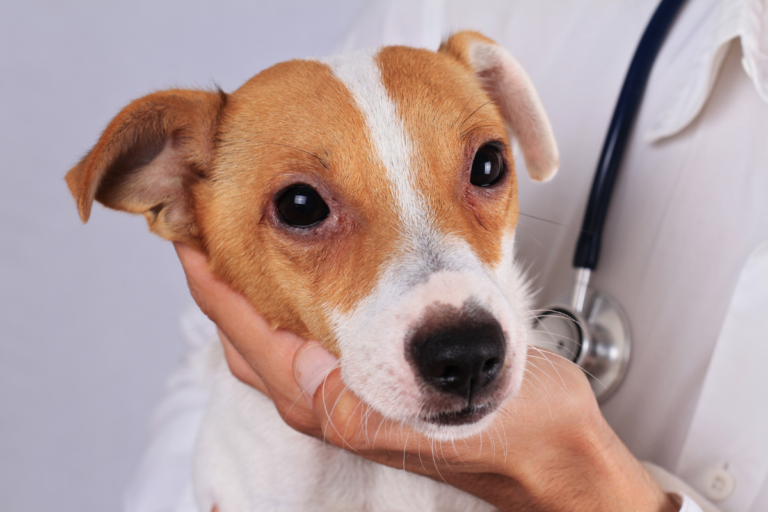Helping Our Pudgy Pooch: Tips for Managing an Overweight Dog
Identifying Overweight Dogs
Spotting when our pooch is packing on the pounds is key to catching health hiccups before they balloon into big problems. Let’s take a closer look at the telltale signs of doggie obesity and suss out if some breeds are more likely to find themselves on the heavier side.
Signs of Dog Obesity
Seeing the signs of chubbiness in dogs is a big deal for heading off and handling the issue. Packing extra pounds messes with a dog’s ability to move and ups the ante for heart issues, creaky joints like osteoarthritis, and might even shave some time off their lifespan (AVMA). Keep your eyes peeled for these signs:
- Hard-to-Feel Ribs: Can’t easily feel their ribs without needing to poke hard? You’ve probably got a chunky monkey on your hands.
- Low Energy Levels: If your pup would rather chill than chase a ball, weight gain might be lurking there.
- Noticeable Fat Pockets: Fat buildups you can spot around the neck, chest, and tail base.
- Lackluster Physical Abilities: Running, jumping, and stair climbing become uphill battles.
- Tummy Droop: When your dog’s belly looks like it’s trying to touch the ground, you know the drill.
Checking your dog’s weight is easier with the body condition scoring system, spanning 1 for “hasn’t eaten in a year” to 9, which is “ate the whole buffet.” Most pups are best in the 4-5 area.
Breed Predispositions
Some breeds are born with a little extra fluff potential due to their genes and metabolism. Knowing if our doggo’s breed is on this list means we can step up and keep the extra weight away.
According to PetMD, here’s the roll call of breeds likely to be a tad heftier:
| Breed | Predisposition |
|---|---|
| Labrador Retriever | High |
| Golden Retriever | High |
| Cocker Spaniel | Moderate |
| Dachshund | Moderate |
| Beagle | High |
| Boxer | Moderate |
| Pug | High |
Got one of these lovable loafers? Better keep an eye on their weight and stick to the exercise guidelines and diet rules to dodge obesity. And don’t skip a chat with the vet for a game plan tailored to keep your dog’s weight in-check.
By picking up on obesity signs and knowing which breeds might need a bit more attention, we can promise our pups a healthier and happier life. Curious about other pup health puzzles linked to weight? Check out our details on dog diabetes symptoms and dog heart failure.
Health Risks of Canine Obesity
When our pups pack on the pounds, they’re in for a canine cocktail of headaches (and not the kind we can toss a ball at). Knowing what’s at stake lets us attack the problem head-on and get our buddy back to tail-waggin’ shape!
Cardiovascular Concerns
Extra flab on Fido could mean big trouble for his ticker. Those added rolls can crank up the risk of high blood pressure, heart ailments, and wheezy breathing. Just imagine running with a backpack full of bricks. That can’t be good for anyone’s heart! Let’s lighten the load, shall we?
For more details on keeping your dog’s heart skipping happily, check out dog heart health.
Bone and Joint Woes
Now, no one wants to see their best bud hobbling around like they’re in a perpetual Charlie Chaplin movie. An extra bit of weight can strain their joints, ushering in painful conditions like osteoarthritis (VRAvet). Dogs like our German Shepherd pals are particularly susceptible. Yep, they haven’t just been catching Frisbees at a bad angle.
| Condition | Prevalence in Chubby Dogs |
|---|---|
| Osteoarthritis | High |
| Dysplasia | Moderate |
| Ligament tears | Moderate |
Shorter Walk in the Park
A little heft can unfortunately mean fewer golden years with our four-legged friends. Just some extra jiggle around their middle makes them prone to the bad stuff like diabetes and even some cancers (PetMD). Face it, we want them around as long as possible.
Here’s what that scales out to for their future:
| Weight Category | How it Affects Lifespan |
|---|---|
| Normal Weight | Life’s a breeze! |
| Overweight | Clock’s ticking! |
| Obese | Paging Doctor Doom! |
Keeping our pooches fit isn’t just good for them; it’s good for us, too. Working with a vet to trim the fat is a game changer we all can wag our tails about. And for the fine print on keeping the kibble count in check, wander over to our bit on shedding puppy pounds.
Factors Contributing to Obesity
Let’s dig into why our pups might be packing on a few extra pounds and how we can help them stay trim and healthy.
Diet and Feeding Habits
Giving our four-legged buddies an all-you-can-eat buffet can easily lead to a chubby pooch. Overfeeding, which includes both dog kibble and those irresistible human snacks, is a major factor in canine weight gain (PetMD). The more they munch without moving, the more they gain.
Keeping their diet in check is like handling a seesaw. Instead of letting them graze all day, consider structured meals. This way, we manage their calorie intake better. Be stingy with the treats, and say no to those puppy-dog eyes begging for table scraps. Weighing them regularly helps keep tabs on any weight they might be sneaking on.
| Feeding Habit | Contribution to Obesity |
|---|---|
| Regular Meals | Balanced, must watch portions |
| Free-Choice Feeding | Leads to overeating |
| Treats and Human Foods | Watch out for extra calories |
Lack of Exercise
Just like us, dogs need their daily workout to keep their figures. Skipping exercise means fewer calories burned, resulting in weight gain. Regular walks, games of fetch, or a fun romp at the dog park keep them lively and in shape.
Setting up a routine not only helps with weight management but also boosts their heart health. For ideas on keeping your pooch active, check our Exercise Guidelines for Dogs.
Neutering Effects
After neutering, dogs might tend to plump up a bit. The surgery influences their metabolism due to changes in hormone levels, making them prone to weight gain. Experts suggest adjusting their food intake after neutering to balance the slower metabolism (dvm360).
| Neutering Status | Metabolic Impact | Risk of Weight Gain |
|---|---|---|
| Intact | Regular metabolism | Lower risk |
| Neutered | Slower metabolism | Higher risk |
Medications and Hormones
Some meds and hormone issues can be sneaky culprits in weight gain. Medications like phenobarbital and glucocorticoids can lead to a heftier hound. Phenobarbital cranks up hunger, while glucocorticoids encourage fat storage (dvm360).
Hormonal troubles such as hypothyroidism and Cushing’s disease also tend to tip the scales and need special attention (PetMD).
| Medication/Hormone | Effect on Weight |
|---|---|
| Phenobarbital | Boosts appetite |
| Glucocorticoids | Piles on the pounds |
| Hypothyroidism | Slows metabolism |
| Cushing’s Disease | Packs on weight |
Knowing these factors means we can nip obesity in the bud and help our dogs live their best lives. A chat with the vet can tailor a plan for their needs. For more tips on diet and consulting with a vet, browse our sections on Dietary Recommendations and Consulting with a Vet.
Preventing and Managing Dog Obesity
We get it—our furry buddies mean the world to us, and we all want them wagging their tails in good health. When your pooch starts to look a little less lap dog and a lot more chonky, it’s time to grab the reins on their exercise and diet. Let’s dig into the ways we can keep our chubby companions in shape.
Exercise Guidelines for Dogs
Keeping your dog active is a must to shed those extra pounds. Of course, not all dogs are built the same, so it pays to tailor their activity to their breed, age, and health status. Here’s a simple playbook:
- Daily Walks: Aim for about 30 minutes to an hour of strolling each day. Your dog gets to sniff some trees, and you get your steps in.
- Playtime Shenanigans: Spice things up with toys, a game of fetch, or even agility courses if they’re feeling fancy.
- Splashing Around: Swimming is great if your dog’s a water lover, and it’s gentle on those worn-out joints.
Not only does exercise help in burning those kibble calories, but it also gives your dog’s mood a solid boost and keeps health issues like joint aches and heart troubles at bay.
Dietary Recommendations
Food is love, but sometimes love needs a little moderation. Here’s how to sort out a diet for a dog packing on the pounds:
- Scheduled Meals: Stick to controlled portions rather than letting Fido free-feed.
- Weight-Loss Chow: Pick dog foods that lower calorie intake but rev up their metabolism. There’s a whole section for this at VCA Hospitals.
- Guilt-Free Snacks: Opt for low-calorie treats or reward them with veggie delights like carrots or green beans.
You should eyeball a weight-loss target of shaving off 1-2% of their body weight each week, says PetMD.
| Food Type | Caloric Content (Approx.) |
|---|---|
| Regular Dog Chow | 350-450 calories per cup |
| Weight-Loss Dog Chow | 250-300 calories per cup |
| Treats (Carrots) | 25 calories per medium carrot |
Weight-Loss Strategies
A consistent game plan is your golden ticket to seeing that waistline shrink:
- Track the Scale: Weigh ’em frequently to keep an eye on progress.
- Portion Adjustment: Tweak meal sizes based on the scales and the vet’s say-so.
- Routine and Routine: Stick to regular exercise and feeding schedules to help your dog adjust nicely.
Pick activities that make your pet’s tail wag, to make this a happy health journey for both of you.
Consulting with a Vet
Even the best pet parents need a vet’s wisdom when tackling a chunky dog. Here’s how the vet’s visit pays off:
- Finding the Fit Weight: They’ll help pin down the ideal weight and check on overall health.
- Calorie Counting: Vets know the calorie math well, ensuring no fluff is left unturned.
- Customized Planning: Craft a plan that suits your pooch’s lifestyle just right.
Plus, they’ll help keep an eye on meds, like phenobarbital or glucocorticoids, that might be adding to the puff (dvm360).
So, with these tips—and a little vet consultation—we’re paving the way for our rotund Rovers to live their best life. Check out more tips on our other articles like dog heart disease.
Obesity Epidemic in Dogs
Prevalence and Statistics
Hey folks, we’ve got a bone to pick with the skyrocketing number of porky pups out there. We aren’t just barking mad; around 60% of dogs in the good ol’ US of A are packing too many snacks in their doggy bags. It’s not just one source howling this tune. Different reports show 22% to 40% of pooches tipping the scales too much, with one out of every three dogs that visit the vet being in need of a slim-down. There are even whispers that up to 65% of our tail-wagging friends are in the chubby club (PetMD).
| Study/Survey | Chunky Doggy Stats |
|---|---|
| Banfield Pet Hospital (2019) | 33% |
| dvm360 | 22%-40% |
| GoodRx | 60% |
| PetMD | 65% |
Effects on Longevity
Having a fluffy friend a bit on the heavy side might seem harmless and cute, but it’s no laughing matter when it comes to their lifespan. Those extra pounds can lead their hearts to work overtime, putting them at risk for heart nasties. Dogs with too much heft face higher risks of heart disease, a real tough bark to live with.
Joints scream for relief under the added heft, turning everyday playtime into a painful chore. As their movements slow to a halt, it becomes a vicious cycle with weight piling on more.
Plus, being too cuddly can open the door to gloomy guests like diabetes and cancer, shortening those canine golden years. Studies yowl that our cuddlier companions typically have fewer birthdays than their fit comrades.
Health Implications
Roll over so we can shed light on some serious health hiccups linked to pudgy pups. Heavy pooches have hearts pumping harder than a squirrel in a dog park, often spelling high blood pressure and even risking heart failure. It’s not all chest stuff, though.
Our fluffy pals also bear the weight on sore joints, bringing on conditions like hip woes that are far from ideal, especially for energetic breeds like German Shepherds.
When the pounds stack up, life gets tricky. Simple activities—walking, hopping up the stairs, or even just lying down for a nap—become tougher than chasing a mailman.
| Health Problem | The Skinny on Effects for Hefty Hounds |
|---|---|
| Cardiovascular Headaches | High blood pressure, heart issues, potential heart failure |
| Joint Struggles | Arthritis, hip anguish, general hopping hindrances |
| Shortened Doggie Years | Fewer fetch days, more vet bills |
| Sugar Troubles | Upped chances of diabetes |
| Tumor Terrors | Heightened odds of some cancers |
Keeping your furry friend from morphing into a couch potato is the name of the game. Check out our tips on healthy diets and weight-loss fun to get your buddy back to a tail-wagging, healthier self. And hey, a little vet visit can work wonders too—those pros have all the paws-on info to keep tails wagging happily and healthily.
Genetic and Environmental Influences
Alright, folks, let’s chat about keeping our chunky pups in check. It’s not just about keeping those tails wagging—it’s about understanding what makes our fur babies pack on the pounds. You see, our dogs aren’t just born cuddly marshmallows; genetics and the daily grind play big parts in their waistlines.
Genetic Factors
Let’s start with the stuff they’re born with—genes. Just like some folks can gorge on cake and stay slim while others even sniff broccoli and feel the scales tip, it’s the same for dogs. Some breeds are naturally more prone to turning into doggy doughnuts. Genes decide a lot of things: how much they want to munch, how fast they burn off their breakfast, and where that extra biscuit decides to settle. We’re talking about anywhere between a quarter to almost all of a dog’s weighty woes being down to their DNA.
Environmental Contributors
Now for the things we can actually change. Yes, it’s you, the owners! The age-old saying “old dogs, new tricks” might have some truth here since older or less active folks might not give their pups the daily workout they need. Add in money matters—because budget-friendly kibble and exercise gear can be hard to come by—and it’s a whole shebang influencing that pooch poundage.
A lazy lifestyle is as bad for dogs as it is for us. Regular romps in the park are a must. In need of some workout ideas for Spot? Check out our exercise suggestions.
Impact of Neutering
Getting snipped can slow down a dog’s calorie burning. Yep, losing certain hormones means they might start eyeing that kibble next door with extra fondness. This doesn’t mean your dog’s doomed to be a chonker post-surgery. A little nip in their calorie intake post-snip should keep them in shape. Chat with your vet about it. We’ve got some extra tips on this in our vet advice section.
Medication Effects
Let’s not forget about meds. Certain pills can turn your dog into a chowhound. Phenobarbital might have them eyeing everything on your plate, while glucocorticoids could make those calories stick like glue. Keeping a close eye on their vittles and how much they’re running around can counteract these effects. A regular chinwag with your vet can help steer you right—more details await over at our medication tips page.
By knowing what’s making our buddies heavy, we can keep them healthy and spry. With a bit of know-how and a sprinkle of effort, our furry pals can shine bright like the stars they are. Curious about shaving off a few pounds? Swing by our weight-loss guidance for some pointers.






